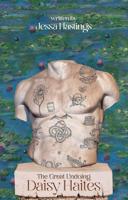Publisher's Synopsis
Excerpt from The Rural Carolinian, Vol. 4: An Illustrated Magazine of Agriculture, Horticulture and the Arts
Strange infatuation! Southern farmers and planters think all kinds of land should yield abundant harvests of all kinds of crops, with the least possible labor, except when planted in corn or cotton. These two cr0ps will have the land well prepared and highly manured for them, and demand ceaseless labor of the laborer and em ployer for a twelvemonth; and, though the history of the past proves that the first pays nothing and the second often brings a load of debt, yet, year after year, they are ploughed and hoed, and coaxed and petted as if there was no possible method of earning a dime on the plantation except from the corn crib or gin house. To subsoil land, and manure it, and harrow it, and sow it, and roll it, is too much labor for small grain, but not half enough for corn, and yet such attention will often produce a yield of almost as many bushels of wheat as corn, and the former always sells for double as much as the latter in our markets. Oats, poor, hardy grain, if there is a sterile field on the plantation, there is where they are sown. And rye is seldom thought worthy of a spot on the plantation. Barley is a more aristocratic grain. If it is not sown on a fertile spot it will pro duce nothing, and hence those who sow it treat it more kindly, and for so doing are always handsomely repaid. Now this method of treating the small grain crop at the South is one cause of its being generally inferior. Though having sown wheat for twenty years I never saw cheat nor sturdy until the year 1868. Threshing that year for the public, I received some very fine looking toll wheat which I sowed, and the next year, early in the spring, a coarse, heavy, green tuft was seen occasionally in the wheat field that excited my suspi cions. It grew as rapidly and just as tall as the wheat, but headed out and ripened a little later. The grains stuck very close to the stalk and was in alter nate sections on either side of it. The coarseness of this stalk and its leaves would be distinguishable to the touch in the dark. This mongrel, I was told, was sturdy. About the Publisher Forgotten Books publishes hundreds of thousands of rare and classic books. Find more at www.forgottenbooks.com This book is a reproduction of an important historical work. Forgotten Books uses state-of-the-art technology to digitally reconstruct the work, preserving the original format whilst repairing imperfections present in the aged copy. In rare cases, an imperfection in the original, such as a blemish or missing page, may be replicated in our edition. We do, however, repair the vast majority of imperfections successfully; any imperfections that remain are intentionally left to preserve the state of such historical works.






















